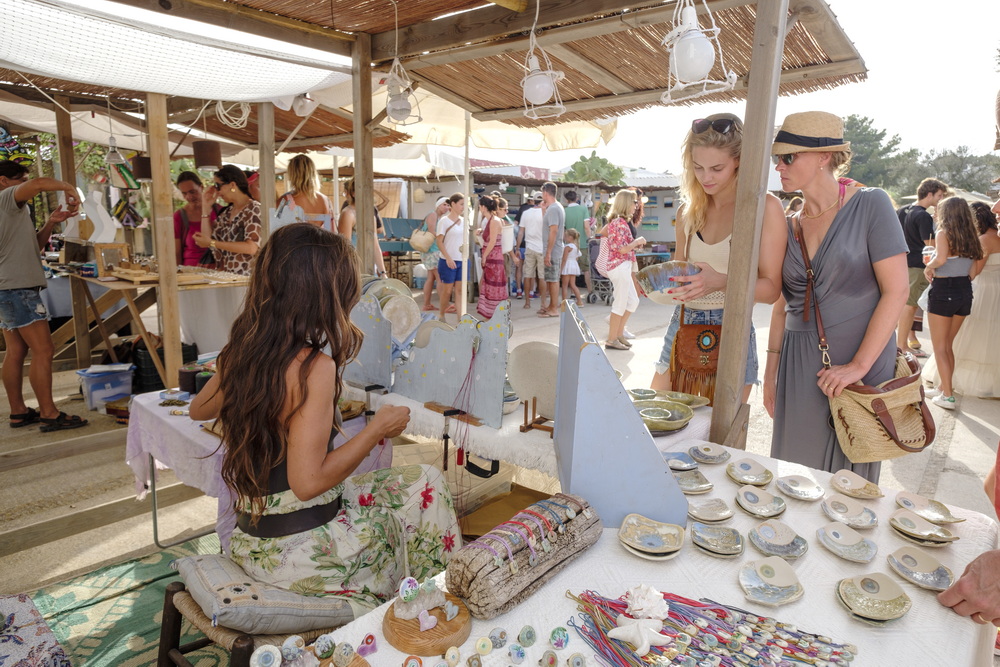In our experience, these are the best ways to learn Spanish. Most people we know give it a go but hit a wall when it gets more complicated than ordering coffee. We have many tips to help you achieve the end goal of speaking Spanish easily in any situation. So let’s consider the best ways to learn Spanish.
Firstly, you need to timetable a slot every day for learning and try not to skip it! Be consistent and keep going, and you will succeed!
Our top tips and tricks to improve your Spanish
The best way to learn Spanish is by regularly speaking in Spanish with a Spanish person. Happily, you can now do this online with tools like iTalki. The Expat joke is that the best way to become fluent is to fall in love with a Spanish person who speaks no English. There’s a lot of truth behind it!
Immerse yourself in the language as much as possible. Watch Spanish movies and TV shows with subtitles or dubbed versions of your favorite shows. Read simple Spanish books you have already read in English (Harry Potter is a favorite for many). Listen to music with Spanish lyrics! The more you expose yourself to the language, the faster you learn.
Consistency is key
Consistency is critical when it comes to language learning. Set aside time each day to practice Spanish, even just a few minutes. The more you practice, the more progress you’ll make.
Don’t rely on just one resource to learn Spanish. Use various tools like online courses, podcasts, and language exchange apps to keep your learning exciting and varied.
While practicing your speaking and listening skills is essential, don’t neglect grammar and vocabulary. Learn the basic rules and gradually build on that knowledge.
Take advantage of technology: Use language learning apps, online courses, and digital flashcards.
Integrate Spanish Into Your Life
Practicing with a native Spanish speaker is one of the best ways to learn Spanish. Join a club or volunteer. Go on dates. Chat with the person at the counter at the market. Say hi to your neighbor. Take every opportunity you can to integrate with the local community. Go into the bank to open your new account.
Build your vocabulary. Focus on the most useful words and sentences and practice!
Be patient and persistent: Learning a new language takes time and effort. Don’t get discouraged if you don’t see progress right away. Keep practicing regularly, and you’ll see improvement.
Good news! Our experience of Spanish people is that they are kind and generous when you try to speak Spanish. Even when we mangle simple phrases and mess up grammar, we’ve experienced only helpful, patient responses.
Your Spain Move Planning Package
No guesswork. Just expert guidance tailored to your situation. Our packages include one-on-one consultations with immigration, tax, and finance specialists—plus access to essential moving tools and direct support from Alastair and Alison.
Best Ways to Learn Spanish for Free
Some great ways to learn Spanish won’t cost you a penny.
Duolingo
Duolingo is a comprehensive language-learning app that is free to use (as long as you don’t mind viewing ads). You can upgrade to a paid subscription to avoid the ads and get some extras. But does it work? I think it is an excellent tool for learning a lot of vocabulary and building your confidence. You feel like you are advancing quickly and will start to feel familiar with Spanish grammar too. However, you are unlikely to become fluent in Spanish only by using this app. You need to use the language and speak it to progress further. And this is where the second free method is useful.
Note: Duolingo teaches South American Spanish, which varies slightly from Castellano. However, in our experience, the differences are minor.
Language Exchange (Intercambio)
This is where you find a language partner online to converse with. You can spend half of your conversation speaking English and the other half speaking Spanish. This way, you both learn from each other and pay nothing.
One site that is completely free to use is Conversation Exchange. You can search for partners in Spain or Latin America. This is definitely one of the best ways to learn Spanish once you have gained a few basics from an app or course.
Free Courses
I recommend this fantastic online course from Language Transfer. It is completely free, but please donate what you can to help them keep providing such a great tool.
It is similar to the Michel Thomas method if you are familiar with that. It asks you not to try and memorize anything or write anything down. You can make rapid progress with this method.
TV and Reading
The other free options are watching Spanish TV and reading simple Spanish texts. I recommend starting with familiar stories such as children’s movies and fairytales. You can also watch more complicated shows using English subtitles. But I find that I forget to listen to the original language, which becomes a bit futile.
Fluentu is a great app to help bring videos to life. It A very entertaining and one of the best ways to learn Spanish! Try the free trial, and you’ll be hooked!
Best way to learn Spanish fast
The fastest way to learn Spanish is to dedicate as much time to learning it as you can. I would use as many methods as possible, starting with good online courses such as Language Exchange, Rosetta Stone, or Michel Thomas.
Supplement the course with an app such as Duolingo or Babbel. There is also a beginner’s Spanish course on Udemy that we’ve used. It is based on repetition and slowly building functional language.
When you have gained some knowledge, this is the time to find an online tutor and a language exchange partner. Get using your Spanish.
iTalki is a brilliant online resource for one-to-one online Spanish classes via Skype or Zoom. You can find online Spanish tutors that suit your schedule and learning style. They cater to all levels and the type of Spanish you want to learn. All teachers have student reviews; many have cheap introductory lessons to find a great match. Ana and Javi have been brilliant in helping us learn Spanish! As a Moving To Spain Client, you get a free lesson and $10 iTalki credits after your first purchase if you sign up using this link.
The more you speak, the quicker it will become embedded in your brain!
Spanish language levels
The Common European Framework of Reference for Languages (CEFR) is used throughout Europe and beyond to evaluate language proficiency levels. The CEFR levels for Spanish are:
- A1: Beginner
- A2: Elementary
- B1: Intermediate
- B2: Upper-intermediate
- C1: Advanced
- C2: Proficient
Real-life Spanish Language Levels
Here is how those levels relate to real-life proficiency:
A1: Beginner
You can understand and use very basic expressions to fulfill simple tasks. You can also introduce yourself and ask others simple questions. You should be able to interact as long as the other person speaks slowly and clearly.
A2: Elementary
You can understand frequently used expressions in most intermediate areas. You are competent at completing routine tasks involving a direct exchange of information. You can describe matters of immediate need in simple terms.
B1: Beginner
You can understand details regarding family, work, school, or leisure-related topics. You can deal with most travel situations. You can create simple texts and briefly describe experiences, events, dreams, ambitions, and opinions or plans.
B2: Upper-intermediate
Able to follow the main ideas of a complex text. Can produce detailed text on a wide range of subjects. Can spontaneously interact without too much strain for either the learner or the native speaker.
C1: Advanced
Able to comprehend a wide range of longer, more demanding texts or conversations. Can express ideas without much effort/ You can effectively use the language for social, academic, or professional situations. Able to create well-structured and detailed texts on complex topics.
C2: Proficient
Able to understand almost everything you read or hear with ease. Ability to summarize information from a variety of sources into a coherent presentation. You can express yourself using precise meaning in complex scenarios.
When should you start learning Spanish?
As early as possible! Don’t put it off till you get here. With all the online options for tutors and exchange partners, there is no need to be in the country to start practicing.
In our first month in Spain, we had a fire in our house and had no idea how to ask the neighbor to call the fire brigade. I was shouting “Fuego-Hombre” at the neighbors, which is NOT how you say fireman in Spanish! It is the “bomberos” in case you were wondering. They were laughing while calling the fire brigade. I was not! Playing charades in an emergency is not ideal!
The more Spanish you can have before you arrive, the better. Being able to order in a restaurant and visit the local market confidently will help you feel a part of the community. And if you can chat with the neighbors, so much the better!
And simple chores like getting a residency card or renting a house are much easier with some Spanish.
Once you are in Spain, however, nothing beats a local immersion course. Ask local Facebook groups for a recommendation; you’re never too far from a Spanish Language School! It is a great way to meet other Expats and one of the best ways to learn Spanish quickly.
FAQS – Best Ways to Learn Spanish
Can I Learn Spanish by myself?
Absolutely. The apps and online courses make this possible. But if you can practice with a partner, it will cement your knowledge.
Is Spanish easy to learn?
Spanish is considered easy to learn because it is phonetic and has a uniform grammar system with few exceptions. And the vocabulary has Latin roots, so much will be familiar to English speakers.
How long does it take to speak fluent Spanish?
This will vary depending on the learner and their consistency of practice. But in general, it will take approximately 600-750 hours of study for an English speaker to reach a professional working proficiency in Spanish. This will put the timeline at around 6-9 months if you study full-time or up to 2-3 years if you study part-time.
How fast can I learn Spanish on my own?
If you work full time, using all the tools available, there is no reason why you could not learn to speak Spanish fluently in under a year.









I am interested in learning spanish in Spain. What is the minimum class hours per week to get a student visa?
Hi Zyrone. The minimum is 20 hours per week to qualify – you can see more in our Spain Student Visa guide. Regards, Alastair